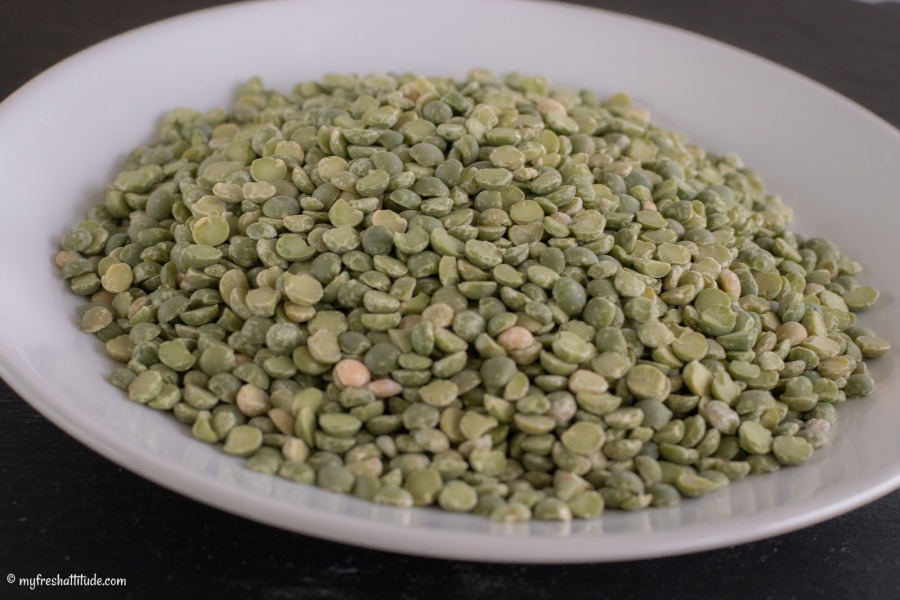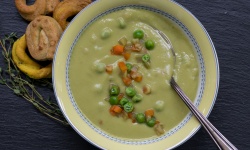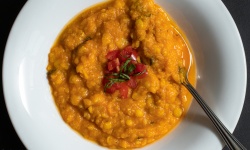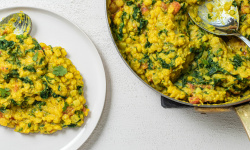
Split Peas
Split peas remind me of my childhood. Whenever I come in contact with split peas today – either by thought or actually eating them – I think of a heavy soup, cold weather and the smell of smoke emanating from the fireplace…and probably a touch of smoky bacon cubes hiding in the soup. This is a comfort-food memory, and it makes me want to curl up somewhere warm with my favorite blanket and the remote control.
Split peas can be green or yellow. They are simply dried English or Garden peas, which develop a natural split during the drying process…hence the name split pea. The large amounts of carbohydrates and fiber in split peas makes them very filling; it’s a source of food that will stay with you for a while. The rich flavor pairs exceptionally well with smoky flavors (I use liquid smoke or smoked paprika to season pureed split peas, or I serve them with Smoky Mushroom Chips). Yellow split peas are ideal for creating Indian-inspired dishes. They pair well with curry, turmeric, black pepper and ginger.
How to Cook Split Peas
Split peas are a legume, but they do not require any pre-soaking because they have had their outer husk removed, which allows water to penetrate the pea more readily and soften the interior. Count on using about 3 parts liquid to one-part peas, which will give you a yield of 2 times the amount of cooked peas to dried. Cooking times can vary depending on the age of the split pea. They will usually take anywhere from 30-60 minutes in a covered pot with simmering water, but there are ways to make the cooking go even faster.
Add a pinch (about 1/4 teaspoon) bicarbonate soda (baking soda) to the cooking liquid. This will change the PH-level to alkaline…and that change will cause the coating to break down a bit quicker and allow for increased water absorption, which will lead to the cell walls softening. Be careful with the amount you use, though. A little will work, while increased amounts of bicarbonate will cause a soapy taste to develop – and that’s just not pleasant.
Avoid using acids in the cooking liquid. The acidic levels will do the opposite of alkaline and slow the cooking process. Acid will also turn the green color of green split peas to a sort of ugly grayish color (you can overcome this by adding some fresh or frozen peas to the mix just before pureeing them, but eventually the acid will cause a color change again during the storing of the puree).
Nutritionally Speaking
Split peas offer high levels of fiber, potassium and carbohydrates, which is why they will fill you up quickly (some people feel a bloating sensation if they are not used to eating legumes). They also contain significant amounts of protein (remember this whenever someone asks you where you get your protein) and the antioxidant vitamin E, as well as B vitamins and healthy trace minerals.
References
Harold McGee, On Food & Cooking
George Mateljan, The World’s Healthiest Foods
Mark Reinfeld, Healing the Vegan Way
Recipes with Split Peas

Green Split Pea Soup
2 1
Tamatar Dal
4 0
There are no comments